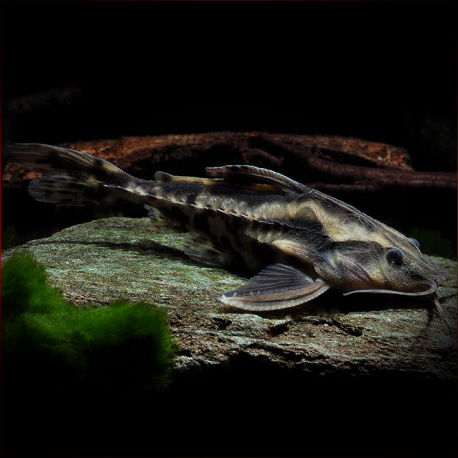상품설명
Datasheet
| 최소 탱크 크기 | 3500 litres / 924.60 US gallons |
| 최대 크기 | 70.0cm / 27.56inches |
| 온도 | 21.1°C / 69.98°F - 25°C / 77.00°F |
| 경도 | 1-20ºdH |
| pH | 5.5-7.5 |
General Description
"Megalodoras Uranoscopus," commonly known as the Giant Raphael Catfish, is distinguished by possessing a unique infranuchal scute within the family Doradidae. This species is recognized for its elongate plate formed by ligament expansion, distinguishing it from other Siluriformes. The Doradidae family includes species that produce audible sounds, earning them the collective title of "talking catfishes."
Aquarium Setup
수족관 구성 및 설비 set-up needs to include a sandy substrate with large pieces of driftwood or a bare layout. Although personal preference plays a role in decorating the tank, a planted setup is not suitable. To maintain water quality, a robust filtration system is essential, especially for adult Giant Raphael Catfish. Details in the setup can be referred to (see table).
Behaviour
The Giant Raphael Catfish is exceptionally peaceful and can coexist with various species when housed in sufficiently sized tanks. Optimal tankmates range from characids to larger loricariids and doradids like Pseudodoras niger. They thrive best in conspecific groups, with a recommended group size of four or more individuals.
Feeding and Diet
As an omnivore, the Giant Raphael Catfish predominantly feeds on aquatic gastropods, fallen fruits, and molluscs/shellfish. In captivity, it benefits from a diverse diet consisting of sinking dried foods, fruits, vegetables, and occasional live earthworms. Adequate feeding is crucial for their growth, with individuals often surfacing during meal times.
Reproduction & Dimorphism
These catfish undergo substantial seasonal migrations tied to their reproductive cycle and have not been successfully bred in captivity to date. Sexual dimorphism is evident, with adult females being larger and heavier-bodied than males, along with variations in the structure of genital papillae.
Habitat and Distribution
Inhabiting slow-moving waters such as tributaries and swamps, the Giant Raphael Catfish seeks shelter among roots and submerged vegetation. They are commonly found in the rios Essequibo, Tocantins, and Amazon, spanning regions in Ecuador, Colombia, Peru, Brazil, and Bolivia. The type locality for this species is Lake Hyanuary near Manaus, Brazil.

